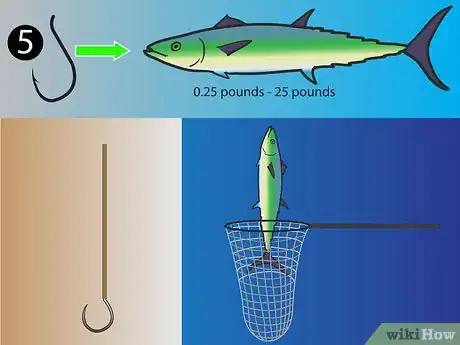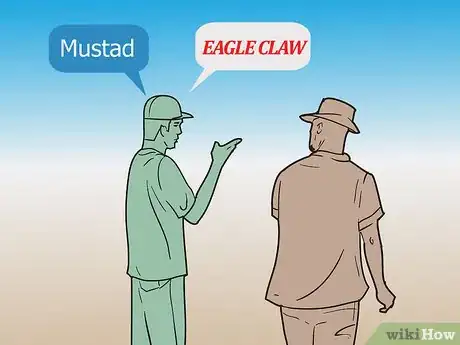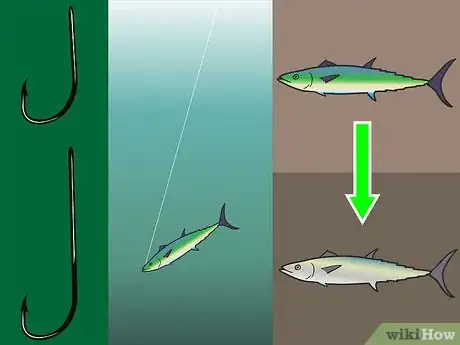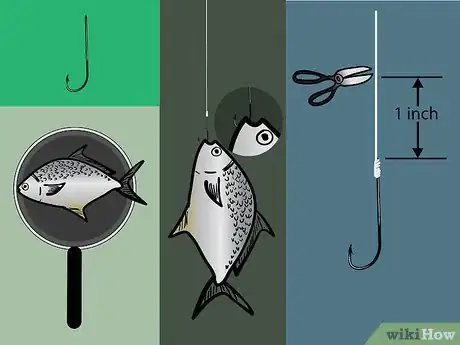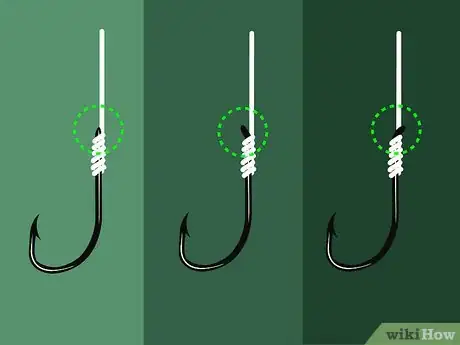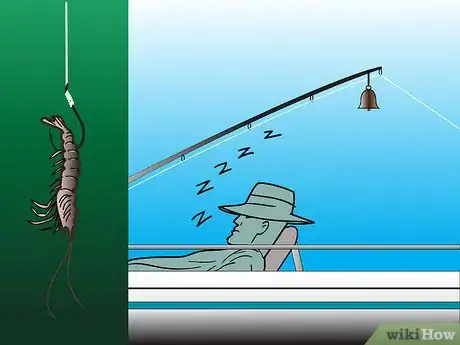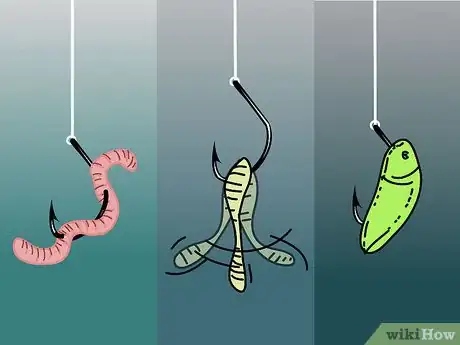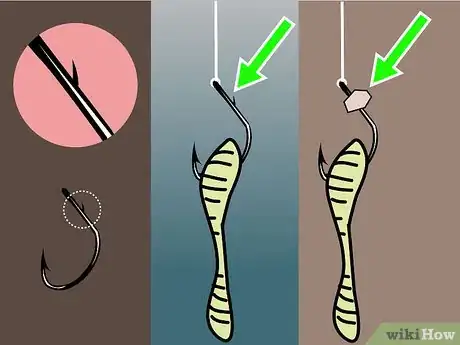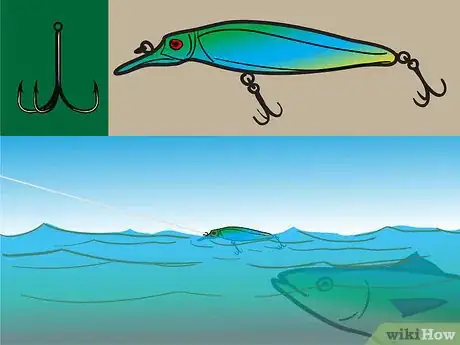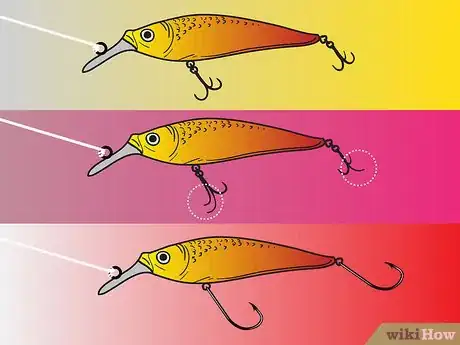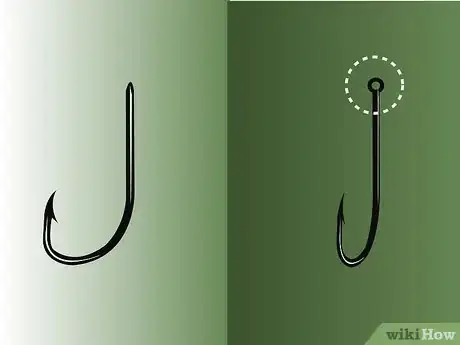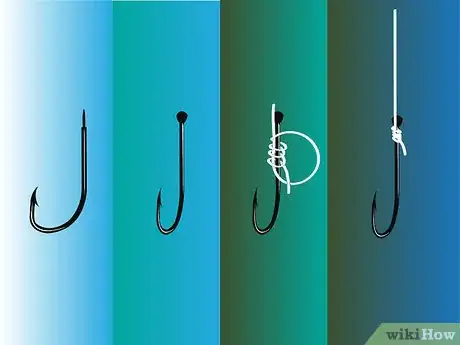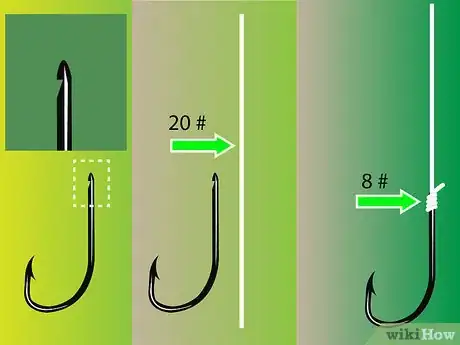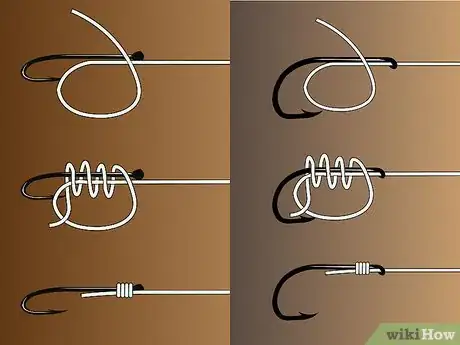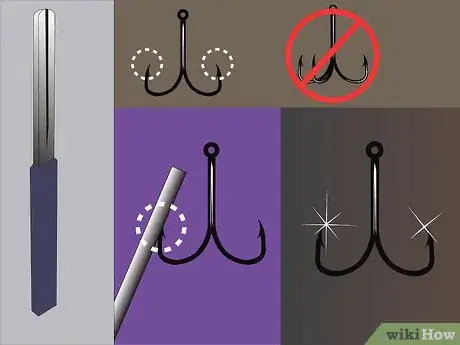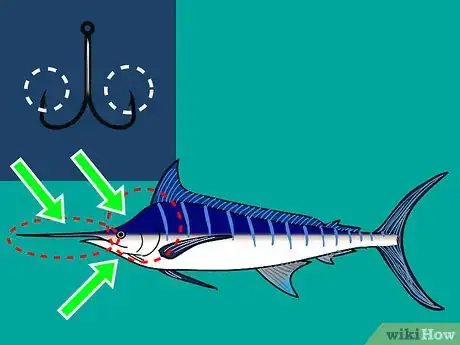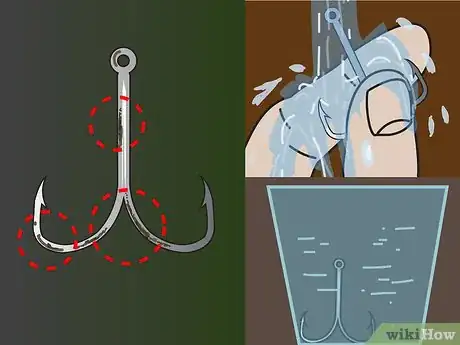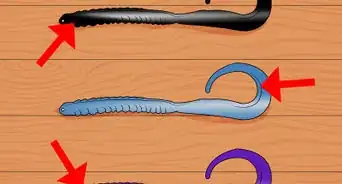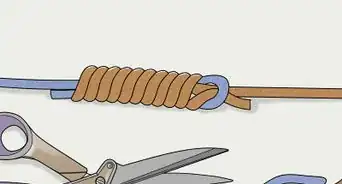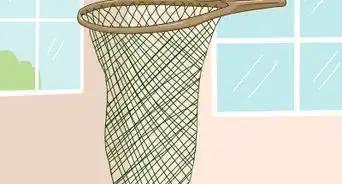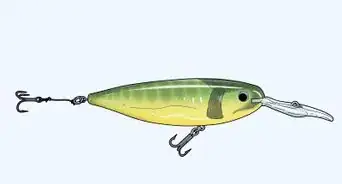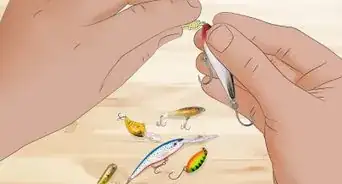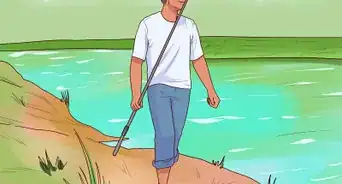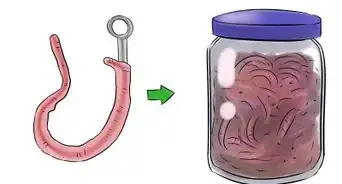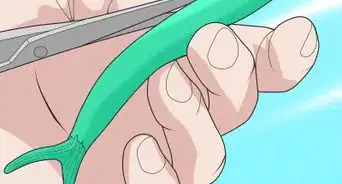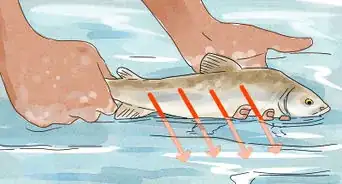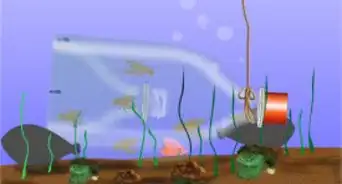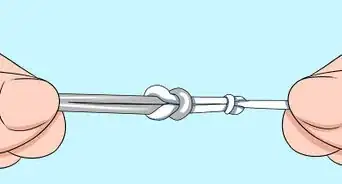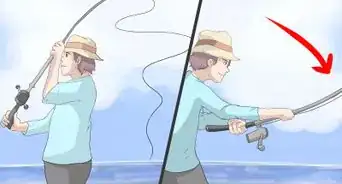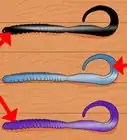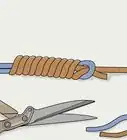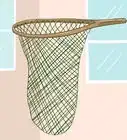wikiHow is a “wiki,” similar to Wikipedia, which means that many of our articles are co-written by multiple authors. To create this article, 13 people, some anonymous, worked to edit and improve it over time.
wikiHow marks an article as reader-approved once it receives enough positive feedback. In this case, 91% of readers who voted found the article helpful, earning it our reader-approved status.
This article has been viewed 175,357 times.
Learn more...
To choose a hook size, there are some important things to know about the size and shape of hooks. Indeed, there are a wide variety of hooks for every fishing style, so it's likely to be an ongoing learning process as you change your fishing techniques and types of fish. In this article, you'll get an overview of choosing the right hooks.
Note: Much of these guidelines also apply to freshwater fishing.
Steps
-
1
-
2Choose a name brand hook like Mustad or Eagle Claw, because their hooks are strong and proven. There are also dozens of other name brand hooks that work even better than Eagle Claw and Mustad. Ask your fellow fishermen what they use. Retailers often push what they either make the most profit from or they are trying to push overstocked items.Advertisement
-
3Use a short shank hook for its strength and a long shank hook for easy removal of the hook from the fish. The short shank hook, by design, is more durable and will not straighten out or break easily. In areas with many coral heads or a drop off, use a strong, short shank hook, heavier lines, and always keep the line taut with the fish on. Instead of forcing the landing of a fish in these conditions, an alternative is to let a big, strong fish tire itself in the deeper water and bring it in in the shallow, line breaking area, after it is no longer "green". An exhausted fish will show its sides which are light colored and not green.[2]
-
4Use the long shank hook for small fish or pan sized fish. The longer shank prevents abrasion to the leader from the fish's mouth and makes hook removal easier. When fishing for small fish, you will be releasing small and undesirable fish, so the shank acts like a leader. When your leader gets weakened, cut it an inch above the eye and reattach it. The longer shank also prevents the fish from swallowing the hook, and helps keep the hook on the fish's lip or jaw.
-
5Use the straight hook, also known as the standard hook, for a wide range of styles and fish. You must set the hook with a straight hook.
-
6Use a circular hook for still bait fishing. Do not set the hook, this type of hook is self-setting. If you set the hook, when the fish is chomping on your bait, you will surely lose that fish. The hook will set when the fish turns and swims away. In this type of fishing, the angler puts a bell or alarm on the rod and does other things like: fishing for smaller fish, sleeping, barbecuing, partying, etc. With the rounded hook, the bait stays on the hook and the fish stays on the hook. The rounded hook is used for medium and large sized fish, because with pan sized fish the object is to catch a lot of fish. Fishing for pan sized fish is an active type of fishing.[3]
-
7Used the AH hook for its spaciousness in placing a bait on it.
- Set the hook, when a fish takes the bait with this type of hook. With an artificial bait, set the hook a bit quicker than a natural bait. With a hard artificial bait set the hook quicker than with a soft artificial bait.
- When attaching an artificial bait or real bait to a hook, notice how it sits on the hook and what action is has when retrieved, trolled or just stationary. This hook is not as sturdy as other hooks but can hold baits well.
- Use barbed shanks to thread plastic baits on the shank. However, threading the plastic bait on the hook curve, like in the illustration, works very well. As an option, slide on a piece of soft plastic chunk to the bottom of the hook's eye.
-
8Use care when using treble hooks. These hooks can get caught on you or your buddies, on reefs, and on trees. These hooks are usually used on plugs and plugs are costly. Plugs that float have the least chance of getting caught of reefs and lost forever. Top-water plug fishing is very enjoyable because you can see the fish attack the lure.[4]
-
9Enjoy the outdoors and fish with top water plugs, because their treble hooks will not snag on the bottom. Most plugs have treble hooks attached, if big fish are tearing your hooks apart attach stronger single hooks in place of the treble hooks. When trolling expect bigger fish to take your plug, so replacing the treble hooks is a good idea.
-
10Depending on the type of fishing you do, choose the right eye. The eye is where you tie the leader to the hook.[5]
- The standard looped eye is good for all types of fishing.
- The non-looped eye requires special snelling techniques for attaching the leader to the hook and is used for bait fishing usually.
- With a hook that has no eye but a notch at the top of the shank, look and follow directions on how to snell hooks of this type. After tying a hook to a line, always test the strength of the knot. For example if your leader line is 20# test, test the knot at 8# of pressure. If you apply close to the breaking strength of a line when tying a knot, you could break the line at the knot. Testing a knot, tightens it and exposes any weakness, if necessary retie the knot.
- Snell hooks, even if they have an eye, for bait fishing, so that the hooks are rigid with the line. A snelled hook is ideal for a multi-hook rig.
-
11For trolling with artificial lures or bait, always use a sharp, medium shank, straight hook. The straight hook is the most common trolling hook, although for smaller big game double hooks are used. Treble hooks are never used for big game fishing. The hook tip must always be sharpened with a hook file. When trolling with artificial or live bait, for big game, the action is few and far between, thus the necessity for having sharp hooks.
- The bill of a marlin and the areas close to it are hard, and it takes a sharp hook to get a hook-up versus a strike.
- Hooks rust faster from trolling use compared to still fishing use, so be sure to always rinse and soak your lures and hooks.
Community Q&A
-
QuestionWhat size hooks should be used when fishing on shore in the ocean?
 Community AnswerWhen fishing for med-small fish (less than 5 kg) ,1/0 - 5/0; larger fish (in the 5 - 15 kg range), 5/0 - 7/0; when fishing for 10 kg+ or sharks, 7/0 - 16/0.
Community AnswerWhen fishing for med-small fish (less than 5 kg) ,1/0 - 5/0; larger fish (in the 5 - 15 kg range), 5/0 - 7/0; when fishing for 10 kg+ or sharks, 7/0 - 16/0. -
QuestionAre circle hooks required when fishing for reef fish in the Atlantic Ocean and the Gulf of Mexico?
 Community AnswerNo.
Community AnswerNo. -
QuestionWhat kind of bait, real or plastic, do you recommend for fishing rock fish (about 20 inches in size) off my dock off the river bank?
 Community AnswerOff a dock, a smaller 5/0 hook is probably your best bet. A spinning reel is great if you’re planning to be casting quite a bit.
Community AnswerOff a dock, a smaller 5/0 hook is probably your best bet. A spinning reel is great if you’re planning to be casting quite a bit.
Warnings
- Always handle fishing hooks with great care to avoid self-injury or injury to others in your vicinity.⧼thumbs_response⧽
Things You'll Need
- Reputable fishing equipment retailer
- Choice of hooks
References
- ↑ https://badangling.com/tackle-advice/a-guide-to-fishing-hook-sizes-and-types/
- ↑ https://www.go-saltwater-fishing.com/fish-hooks.html
- ↑ https://www.saltstrong.com/kids-fishing/equipment/hooks/
- ↑ https://www.bishfish.co.nz/articles/general/sharpend.htm
- ↑ https://fishingbooker.com/blog/fishing-hooks-101-parts-sizes-types/
